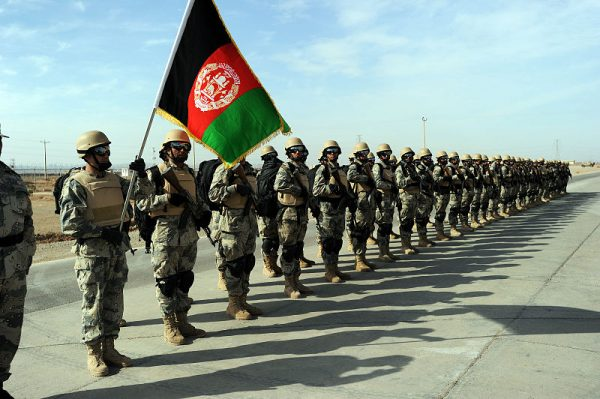What’s Russia’s Aim in Afghanistan?

The Russian presence in Central Asia, predicated on the threats from Afghanistan, stymies the political and economic development of the region.
On November 24, 2020, Russian Foreign Minister Sergei Lavrov, in a video message to the participants of the Geneva International Conference on Afghanistan, expressed Moscow’s concern about the ongoing escalation of violence in Afghanistan.
In particular, he emphasized that Islamic State militants are concentrating forces in the northern provinces of the country in order to create a springboard for further expansion into Central Asia. This statement came following a decision by outgoing U.S. President Donald Trump to further reduce the number of U.S. troops in the county to 2,500 by mid-January 2021, which may serve to validate the fears of the Russian side about a deteriorating security situation. At the same time, there are factors that cast doubt on Moscow’s position, which can also be regarded as part of a Russian desire to substantiate its foreign policy objectives in the south.
Russian officials have made numerous comments in the past about the growing influence of international terrorist groups in northern Afghanistan that, Moscow says, aim to expand their operations into Central Asia. In November 2018, Lavrov touched on this topic during a speech at a conference on Afghanistan held in Moscow and announced that the Islamic State contingent in the Afghanistan was receiving support from foreign sponsors in order to turn the country into a zone for further advancement in Central Asia’s direction. In January 2019, Russian Deputy Foreign Minister Igor Zubkov also voiced concerns that Islamic State militants were grouping together in helicopters and readying an attack toward the Tajikistan border. That statement was made a few days before a visit by Lavrov to Dushanbe, where he offered additional security assistance to the Tajik side.
Despite the weakening of the Islamic State’s positions in the Middle East and Afghanistan, it is apparent that statements made by Russian officials about the existing threat of the spread of the conflict into Central Asia are both a reaction to Western policy and a desire to make the problem of international terrorism in Afghanistan topical in order to maintain Moscow’s influence in the region. Currently, Russia’s military presence in Central Asia is limited to the 201st Russian military base in Dushanbe, Tajikistan; an airbase in Kant, Kyrgyzstan; and a torpedo-test range on lake Issyk-Kul, also in Kyrgyzstan. According to observers, this presence allows Russia to maintain political influence in Central Asia and receive information about the combat and operational capabilities of the local armed forces.
The withdrawal of Western coalition forces from Afghanistan expands the geostrategic field for the advancement of Russia’s interests in the broader region. Some observers note that Washington’s decision to withdraw troops can be regarded as a failure of U.S. policy in Afghanistan and could hand Moscow the role of main negotiator in the settlement of the inter-Afghan conflict. However, there is also speculation that the Kremlin’s relationship with the Taliban is not limited to diplomatic negotiations to reconcile the warring parties, but deeper, touching on coordination in a joint fight against the Islamic State. With reference to senior sources in the U.S. military and the Afghan government, it has been reported that Russia is supplying weapons and fuel to the Taliban through the countries of Central Asia.
Russia does not have sufficient resources to fully implement its ambitious plans to expand its geopolitical influence, but at the same time, it is trying by all possible means to preserve and strengthen its presence in Central Asia. Afghanistan is a clear core factor in that effort. Such circumstances restrain the countries of the region from building and conducting a more independent foreign policy, limiting the interest of Western investors and, accordingly, stalling regional economic development and improvement of the population’s welfare. Therefore, it is extremely important for the United States and the EU to maintain close contact with the countries of the region and provide assistance in their integration into the international community beyond the Eurasian space. In turn, the Central Asian countries need to continue reforms aimed at increasing the transparency of their economies, liberalizing their foreign exchange markets, and creating favorable conditions for investors and guarantees to protect their investments.
